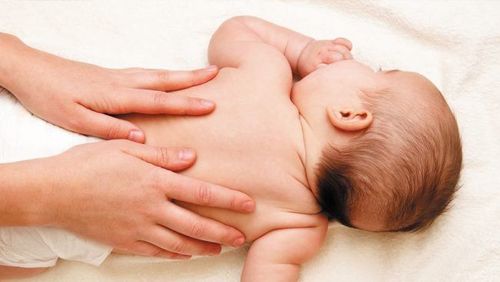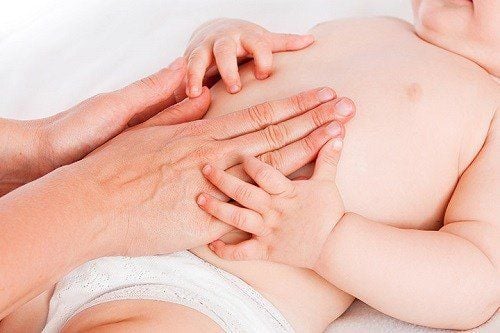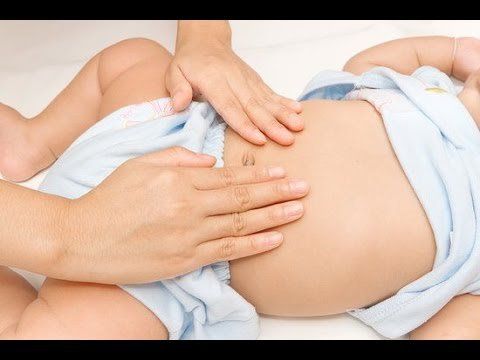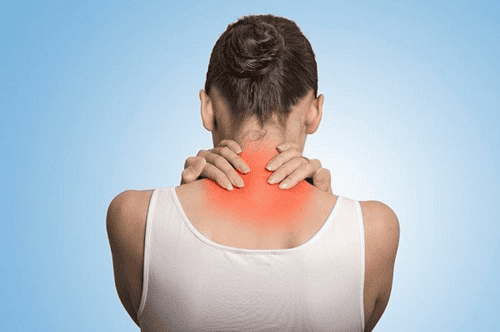This is an automatically translated article.
The article was consulted professionally with Master, Doctor Phan Thi Cam Van - Neonatologist - Department of Pediatrics - Neonatology - Vinmec Danang International General Hospital.Baby massage is the act of gently stroking a baby's body using massage oils or lotions specifically made for babies. Massage creates opportunities for parents to bond with their children, and at the same time helps children relax, eat well, and sleep better.
1. When can baby massage?
There are no specific guidelines for the minimum age to start massaging your baby. However, there is a general opinion that baby massage should be done when the baby is 1 month old, because it takes 15 days for the skin to become water resistant.In general, one month is the ideal age because it has many benefits: The umbilical cord will fall off, the navel dries up, the skin is less sensitive than at birth, the skin barrier is stronger and the baby ages This may be more sensitive to touch.
2. Good massage time for baby
The best time to give a baby massage is when the child is alert, well-rested, and seems interested in the environment. You can massage the baby in the morning when the child starts a new day, before bathing the child or in the evening to help the baby sleep better and deeper. However, mothers need to avoid massaging when their baby has just eaten because it can easily cause abdominal pain and discomfort for the child.Also, wait 15 minutes after the massage before feeding again to give the baby's body more time to fully relax.

Thời điểm tốt nhất để massage cho bé là lúc bé tỉnh táo và được nghỉ ngơi đầy đủ
3. Uses of baby massage
Massage offers a number of uses for babies, such as:3.1 Stress relief, muscle relaxation feel good and lower levels of cortisol, a stress hormone. It relaxes muscles, stimulates their growth, and even works especially well for babies with colic.
3.2 Nervous System Stimulation Massage is beneficial for the baby's nervous system as it greatly improves the baby's motor skills development.
3.3 Help baby sleep better Baby sleeps better with massage. This has a number of benefits from faster muscle gain to improved immune response. Infants who are massaged just before bedtime produce more melatonin, a hormone that regulates sleep.
3.4 May improve quality of life for babies with unusual body shapes Massage can be a way to soothe babies with Down syndrome or cerebral palsy. Premature babies show better motor development with regular massage. They even gained weight faster than premature babies who had never been massaged.
3.5 May Help Improve Blood Circulation Massage improves blood circulation and also reduces discomfort levels caused by gas or acid, congestion and teething. Massage stimulates the nerves that pass through the digestive tract, thus benefiting the digestive system.
3.6 Enhances Psychological and Social Development The baby's tactile stimulation has a positive effect on the baby's psychological and social development along with strengthening the baby's relationship with the parents .

Massage mang lại một số công dụng cho em bé như giúp bé ngủ ngon, cải thiện lưu thông máu,...
4. Baby massage steps
Step 1: Seek permission The first step is to 'allow' your child because you don't want to give him a massage when he's not interested. A simple baby massage to do this is to take some oil in the palm of your hand and gently rub it on your baby's belly and behind his ears and watch his body language. If your baby can't stand being touched or grumbles and cries during massage, it's probably not the right time yet. If the baby is showing positive signs and seems to be okay with what you are doing, then you can proceed with the massage. Remember that at first, your baby may not be comfortable with massage because it is a new experience. But when they get used to this, the resistance will be less and the baby can start to enjoy it. Step 2: Massage the feet Start with the baby's feet. Rub a few drops of the oil into the palm of your hand and start massaging the soles of your baby's feet. Use your thumbs to massage from heel to toe. Then, stroke the bottom and top of the baby's feet with your palm. Slowly, circle with your thumb across the bottom of each foot and then to the toes. Don't pull any toes the same way they do adult foot massage. Instead, gently massage each toe up to the tip of the toe. This will help stimulate the nerve endings. Lift one of your legs up and gently stroke your ankle, then slowly extend it toward your thigh. Gently stroke from the foot up to the thigh. You can also massage both legs at the same time if your baby is calm and relaxed. You finish the foot massage process by gently grasping the thighs with both hands. Slowly stroke toward your heart from your feet to your thighs. Step 3: Switch to Arms After the legs have been massaged, the arms should be massaged. The form of massage is quite similar to the foot. Hold the baby's hand and stroke it over the palm of your hand. Slowly make small strokes on your baby's fingers, towards the tips of the fingers. Turn your baby's hand around and now gently massage the back of the hand in straight strokes toward the wrist. Then, gently massage your wrist in a circular motion, like wearing a bracelet. Move your movements slowly toward your forearm and then your upper arm. Massage your entire arm in gentle circular motions as if you were wringing a towel. Step 4: Massage Chest and Shoulders Perform light parallel strokes from the left and right shoulders towards the baby's chest. Then you can put your hands back on your shoulders. Repeat the movement gently. Next, place both of your hands in the center of your baby's chest and massage outward from the body toward the side. Make gentle strokes outward from under the sternum, the breastbone, across the chest, as if following the shape of the heart. Step 5: Tummy massage time Next is the baby's stomach. Remember, the abdominal area often causes pressure, and therefore you must avoid even the slightest pressure. You start the stroke from the top of the abdomen just below the breastbone. Place your palm gently under the breastbone and stroke in a clockwise circular motion all over the abdomen, around the navel. Do not apply pressure and let your hands gently glide over the abdomen. Continue clockwise circular motions while avoiding the navel. In young children, the umbilical cord can be sensitive and fragile because they have just shed the umbilical cord.
Khi massage vùng bụng bạn hãy chuyển động tròn theo chiều kim đồng hồ và tránh rốn của trẻ
Besides, parents also need to supplement their children with essential micro-minerals such as zinc, lysine, chromium, selenium, vitamin B1, ... to fully meet the nutritional needs of children. The addition of these essential vitamins also supports digestion, enhances nutrient absorption, improves anorexia, and helps children eat well. Parents can simultaneously apply dietary supplements and functional foods derived from nature for easy absorption. The most important thing is that improving your baby's symptoms often takes a long time. The combination of many types of functional foods at the same time or continuously changing many types in a short time can cause the baby's digestive system not to adapt and completely not good. Therefore, parents must be really patient with their children and regularly visit the website vimec.com to update useful baby care information..
Reference source: momjunction.com













